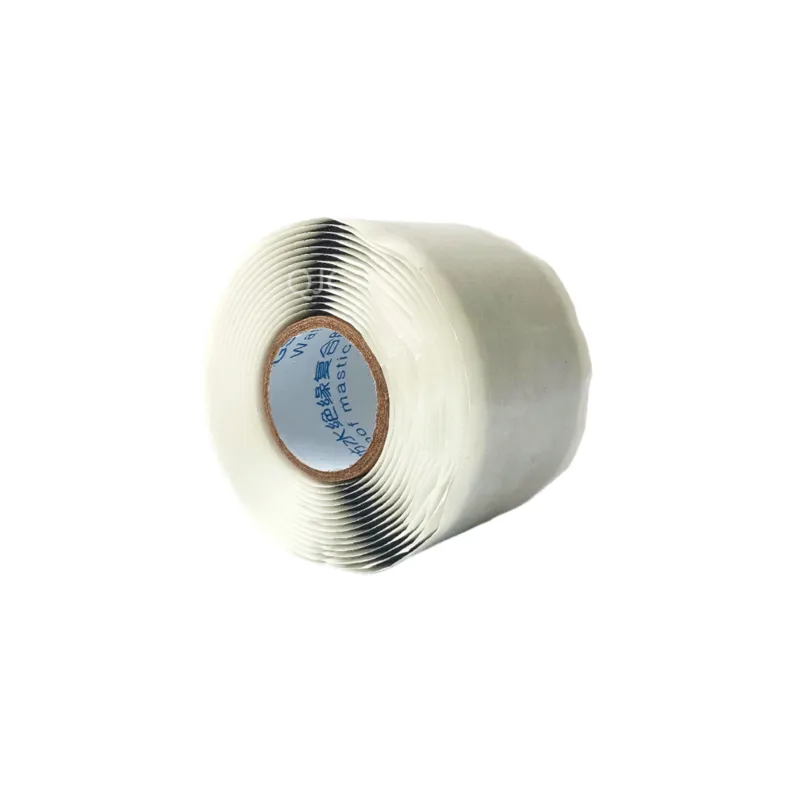What is Rubber Splicing Tape Used For?
Rubber splicing tape is a specialized product used extensively in electrical applications, particularly for insulating and protecting electrical connections. Its primary function is to provide a durable and resilient seal around wires, cables, and other electrical components. This tape is made from high-quality rubber compounds that offer excellent adhesive properties, making it a crucial tool for both professionals and DIY enthusiasts.
One of the main uses of rubber splicing tape is in splicing wires, which involves joining two or more wires together. This process is essential to ensure that the electrical current flows smoothly and without interruption. By wrapping rubber splicing tape around the splice, users can create a strong, weather-resistant bond that protects the connection from environmental factors such as moisture, dust, and extreme temperatures.
Additionally, rubber splicing tape is known for its ability to conform to irregular shapes and surfaces. This flexibility makes it ideal for applications where traditional electrical tape may fail. The tape stretches and molds itself around the wires, providing a snug fit that enhances both mechanical strength and electrical insulation. This property is particularly useful in automotive and industrial settings where space is limited and wiring configurations can be complex.
what is rubber splicing tape used for

Another significant use of rubber splicing tape is in insulation of high-voltage cables. When electrical installations involve high voltages, it is imperative to use materials that can withstand these conditions without breaking down. Rubber splicing tape is designed to maintain its integrity under high pressure and temperature, ensuring that it doesn't lose its insulating properties over time.
Moreover, rubber splicing tape is resistant to UV radiation and chemicals, making it suitable for outdoor applications. This resilience ensures that the tape will not degrade when exposed to sunlight or harsh environmental conditions, further extending the lifespan of electrical connections. As such, it is commonly used in telecommunications, power generation, and distribution networks, where reliable performance is critical.
In addition to its primary electrical uses, rubber splicing tape can also serve other roles, such as providing strain relief for cables. By wrapping the tape around bend points or junctions, users can reduce the likelihood of cable damage due to flexing and movement, thus preserving the integrity of the wires over time.
In conclusion, rubber splicing tape is an essential component in various electrical applications, primarily used for insulation and protection of wire splices and connections. Its unique characteristics—such as flexibility, chemical resistance, and durability—make it a go-to solution for professionals dealing with challenging environments. Whether in an automotive, industrial, or telecommunications setting, the application of rubber splicing tape is fundamental in ensuring safe and effective electrical systems. Its versatility and robust performance highlight its importance in both current and future electrical engineering tasks.
-
XIANGFAN Rubber Tape-Ultimate Solutions for All Your Insulation NeedsNewsJun.24,2025
-
XIANGFAN Rubber Tape-Protection for Industrial and Residential ApplicationsNewsJun.24,2025
-
XIANGFAN Rubber Tape: Superior Safety and Sealing for Demanding EnvironmentsNewsJun.24,2025
-
XIANGFAN Rubber Tape: Reliable Solutions for Every Electrical ChallengeNewsJun.24,2025
-
XIANGFAN Electrical & Industrial Tape: Powering Reliability Across IndustriesNewsJun.24,2025
-
XIANGFAN Electrical & Industrial Tape: Excellence in Every ApplicationNewsJun.24,2025
